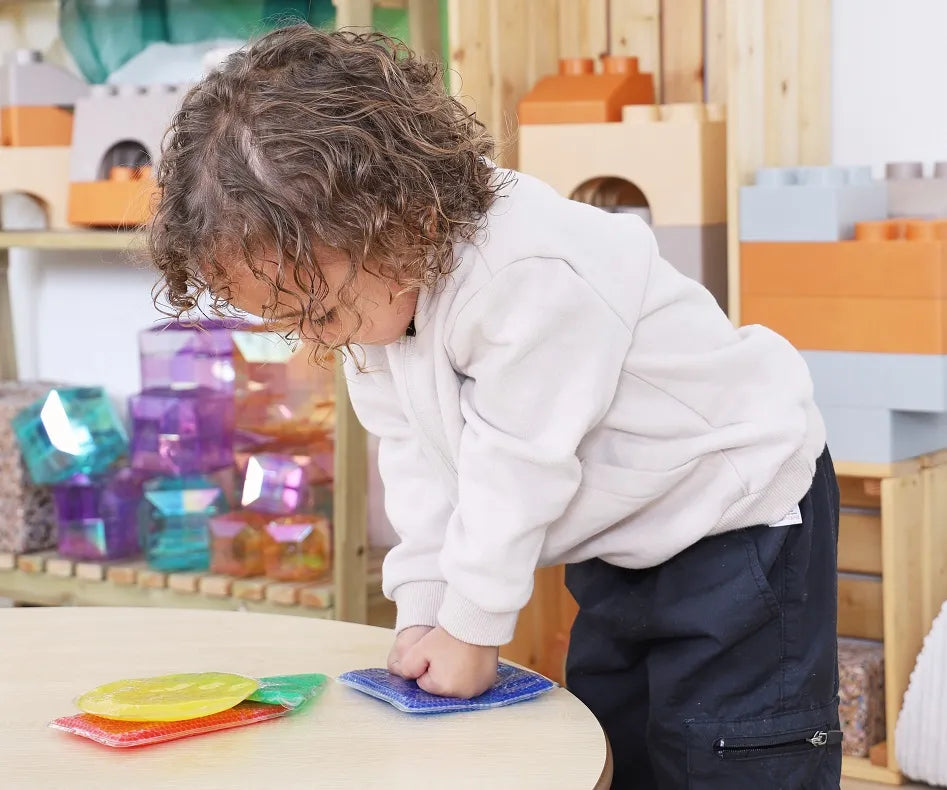Creating safe, supportive environments in schools and early years settings is essential for every child, but for neurodivergent children, it’s more than important. It’s vital. These children often experience the world uniquely and complexly, shaped by sensory, emotional, and cognitive differences. A well-designed safe space can distinguish between a child thriving and feeling overwhelmed.
Why Safe Spaces Matter
For neurodivergent children – including those who are autistic, have ADHD, sensory processing disorder, or other neurodevelopmental differences – the world can sometimes feel unpredictable, overstimulating, or even frightening. A “safe space” isn’t just about quiet corners or calm zones; it’s about building an environment that meets each child’s individual needs and helps them regulate, communicate, and connect.
The first step is knowing the child in front of you. Each neurodivergent child is unique – their sensory profile, communication style, and regulatory needs will all differ. So, before you begin to create a safe space, ask yourself:
-
What are their emerging needs?
-
How does their neurotype impact them daily?
-
How is the current environment supporting – or hindering – their well-being?
-
What is their sensory profile?
-
Are they a sensory seeker or a sensory avoider?
-
What does dysregulation look like for them?
-
What helps them return to calm?
-
How do they prefer to communicate?
-
What type of play or schemas do they naturally gravitate towards?
This reflective process ensures that any space is designed around the child, not simply for them.
Understanding Sensory Differences
Sensory differences are common among neurodivergent children. To offer genuine support, we must understand how sensory input affects them in theory and practice.
Humans have eight sensory systems, not five, as many believe. These are:
-
Visual (sight)
-
Auditory (sound)
-
Olfactory (smell)
-
Gustatory (taste)
-
Tactile (touch)
-
Vestibular (movement and balance)
-
Proprioception (body awareness)
-
Interoception (internal body signals)
For some children, bright lights or loud noises are painful. Others may avoid certain textures, struggle with temperature regulation, or constantly need to move or chew. Recognising these behaviours as sensory-driven rather than ‘challenging’ is key to creating a safe and understanding environment.
Let’s look more closely at three often overlooked sensory systems:
Vestibular – The Sense of Movement
The vestibular system in the inner ear helps us understand movement, balance, and spatial orientation. Children with vestibular differences may crave activities like spinning, rocking, being upside down, or avoiding movement altogether. If a child seeks or avoids these inputs, it’s a clue to what their vestibular system needs.
Proprioception – The Sense of Body Position
Proprioception tells us where our body parts are and how much pressure we need to apply during movement. Children who constantly push, pull, or crash into things may be trying to meet a proprioceptive need. These behaviours aren't about being "rough"—they’re a way of helping their brains feel safe and regulated.
Interoception – Understanding Internal Signals
Interoception is our internal sensory system that lets us know when we're hungry, thirsty, hot, cold, or need the toilet. Some neurodivergent children may not recognise these signals or struggle to communicate them. Understanding interoception helps practitioners support children who seem disconnected from their physical needs, like those who don’t take off jumpers when hot or need reminders to drink.
How Safe Spaces Help
When you acknowledge and support a child's sensory and emotional needs, you create a space that allows them to:
-
Feel safe and secure.
-
Regulate their emotions
-
Recover from overwhelm
-
Engage in learning and social play on their terms.
-
Build trust with adults and peers.
These spaces can include:
-
Quiet zones with soft lighting and minimal visual clutter
-
Fidget tools and weighted items for sensory input
-
Movement corners with swings, balance cushions, or beanbags
-
Visual supports and clear routines
-
Opportunities for solo play and time out without punishment
But more than what the space contains, it’s how the adults use it. Trust, patience, and curiosity go a long way in making a child feel safe. When children know they are understood, the environment becomes not just a room but a refuge.
Final Thoughts
Creating safe spaces for neurodivergent children isn’t about one-size-fits-all solutions. It’s about individualised, responsive support rooted in understanding, observation, and care. By recognising the impact of sensory processing and the power of the environment, educators and caregivers can provide children with the security they need to flourish.
Let’s make our classrooms and early years settings places where every child feels seen, supported, and safe, exactly as they are.

